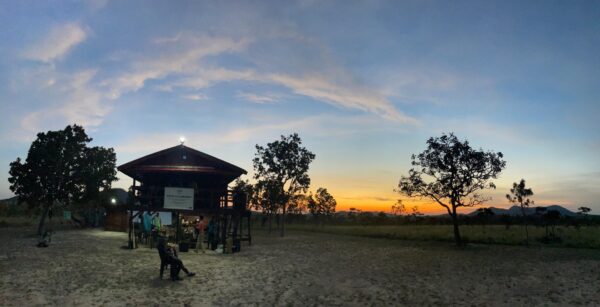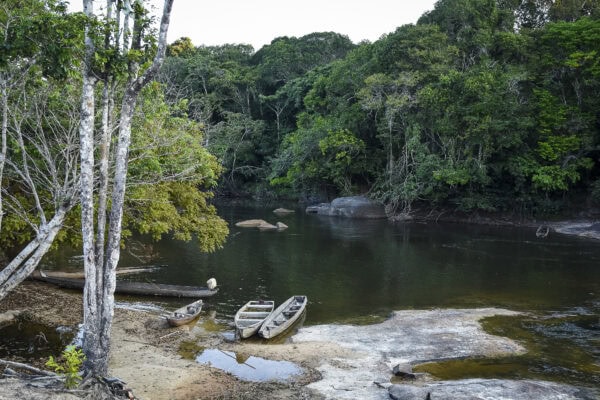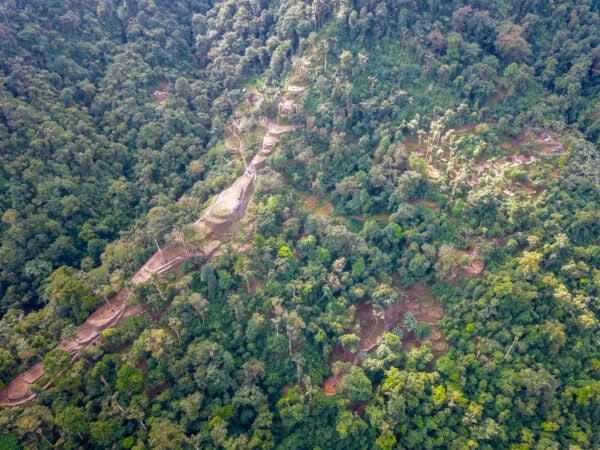In the Amazon, for hundreds of years, two peoples have no contact with the rest of humanity: the Yuris and the Passés. There are indications of 18 other groups fleeing from rubber tappers, missionaries, miners, drug traffickers and guerrillas. Their survival depends on halting deforestation.
Article originally published in Revista Semana, June 8, 2019
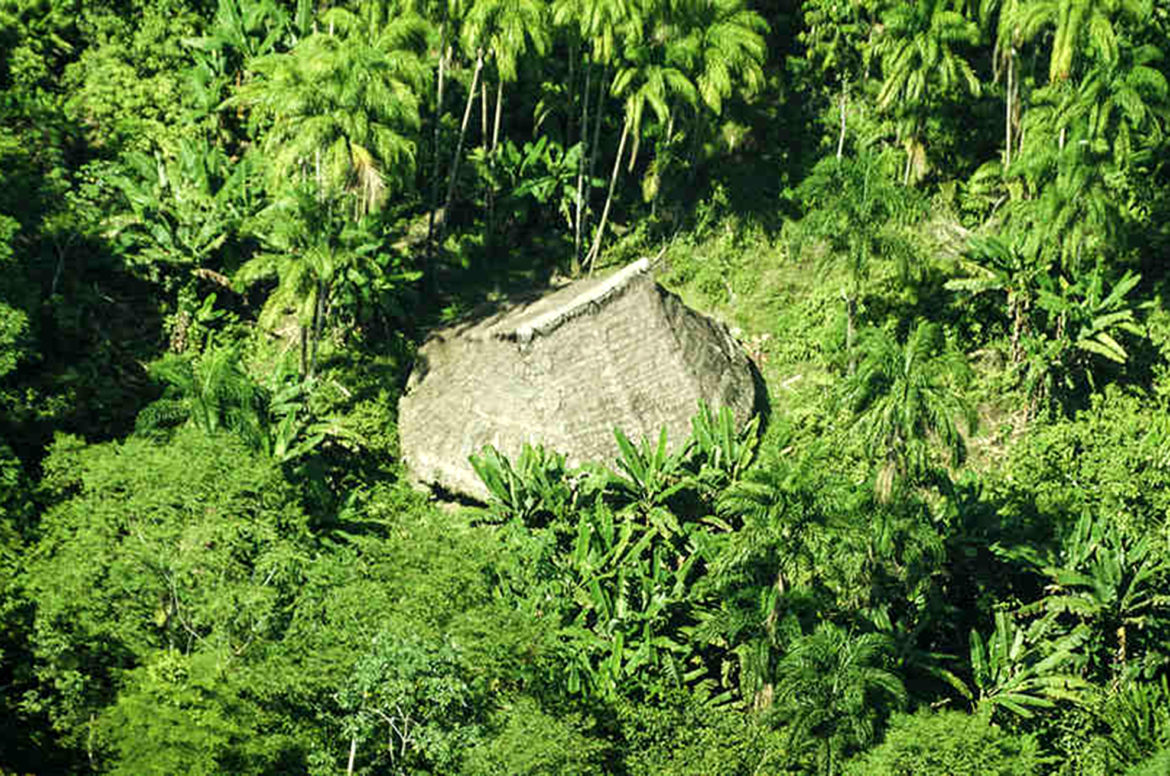
“We hope that they will not cease their struggle to stay away from us, away from the world of motors, motors that only serve the purposes of garroting them and for making beads with their smaller screws to hang around their necks with a chambira cord. Cariba malo.” The epigraph of the final book by the Colombian political scientist Roberto Franco sums up the hope that has obsessed those most knowledgeable regarding the isolated indigenous peoples: that no one ever finds them.
Cariba malo, which means “bad white man”, encapsulates in two words the history of the centuries-old struggle of peoples who chose to go into the rainforest to avoid dying of hunger, influenza, malaria, to avoid being chained or enslaved. Time passed, but for them it is the same whether a Spaniard with armor or a mining barge, a rifle or a chainsaw. Maybe that is why they do not want to return.
They know that there is something beyond the rainforest, because they hear and see the planes that daily travel the Bogotá-Leticia commercial route when they fly over the Puré National Park in the Amazon. There are no more than one hundred families of the Yuris and the Passés, the two groups of uncontacted indigenous people whose existence today is demonstrated in the nation thanks to Roberto Franco.
Until 2014, when he died in an absurd accident over the forests of Caquetá, Franco had been studying the presence of isolated peoples in the Amazonian territory for more than 20 years. He managed to disprove the theory that the Yorimanes and Yurimaguas, Brazilian indigenous peoples with tattooed faces, had disappeared from the face of the earth at the hands of Spanish and Portuguese conquerors.
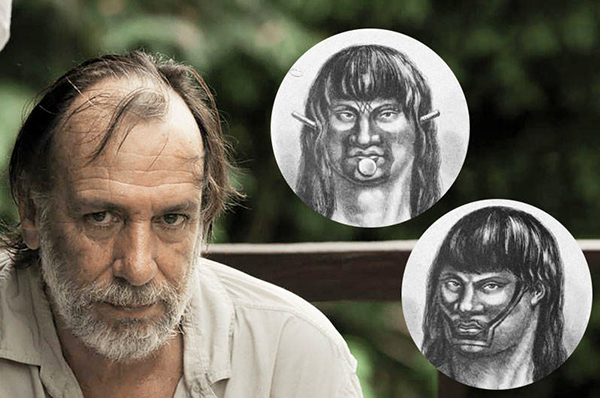
For more than 20 years, Roberto Franco compiled information about the yuris and the passés. His findings are in Cariba Malo, his last book, published in 2012. On the right, an illustration of these indigenous people dating to 1873.
With bibliographical material, testimonies, and overflights of the forest floor, he showed that, towards the end of the 19th century, descendants of these ethnic groups walked more than 700 kilometers towards the Colombian rainforests, fleeing from the rubber tappers, in order to definitively isolate themselves from the world. They ascended the Caquetá and Putumayo rivers until they found the Puré River. And they changed their name to the Yuris, Passés, Uainumás and Jumanas.
The Yuris and the Passés, although they are different ethnic groups, apparently have traveled together for years. Daniel Aristizábal, isolated peoples project coordinator of the Amazon Conservation Team Colombia (ACT), says that they are sister tribes, who share women and have their malocas (longhouses) very close to each other’s. “My hypothesis is that they have been together for 200 years, and today they are probably the same. That is common in the rainforest, and that’s why the names are composite: Bora Miraña and Matapi Yucuna are examples. They are almost always fused families. Many isolated peoples have stolen women from other ethnic groups in order to continue reproducing.”
At the time of his death, Franco was an ACT researcher. This international organization has spent 22 years studying the uncontacted in the rainforest and resumed the research of the political scientist in order to make progress in activities that ensure the survival of these tribes.
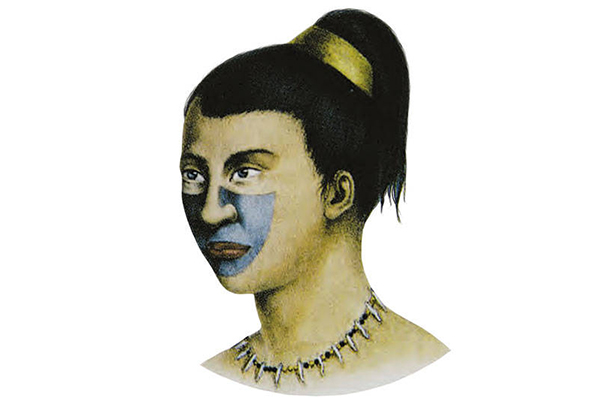
Although their homes at the head of the river are shielded by dense rainforests and marshes, there are dangers in the area that threaten their survival. “The Puré River is located on the border with Brazil, where they entered. Before the creation of the park, in 2002, its main problems were runways built by drug traffickers, timber trafficking, hunting, fishing and illegal gold mining,” says Aristizábal.
With the departure of the FARC, the drug traffickers opened new routes of the kind that had been halted in the past ten years. ACT calls attention to that threat. “Along the Putumayo and Caquetá rivers, there are military bases in Colombia and Brazil, so the narcotraffickers, to avoid passing these, are traveling down the Puré River. Although the isolated peoples are further from this path, at any moment a contact situation could occur, which would trigger a confrontation. There is also a significant threat from selective timber extraction in the southern area of the park.”
Arguments for isolation
Not only European diseases caused the isolation of these tribes. Franco discovered that Franciscan priests crossed the Putumayo River determined to evangelize them, and attracted them with axes, machetes, knives and clothes.
A similar strategy was used in the 1970s by the Baptist evangelist Donald Fanning who, flying a small plane, threw clothes and food next to the malocas. Or, at the end of the same decade, like the missionaries of the Summer Institute of Linguistics who diverted the Nukak Maku from their ancestral migratory routes with acetaminophen and sweets. They became sick because they had had contact with coca growers and traffickers. They needed help, and they reached them in that manner.
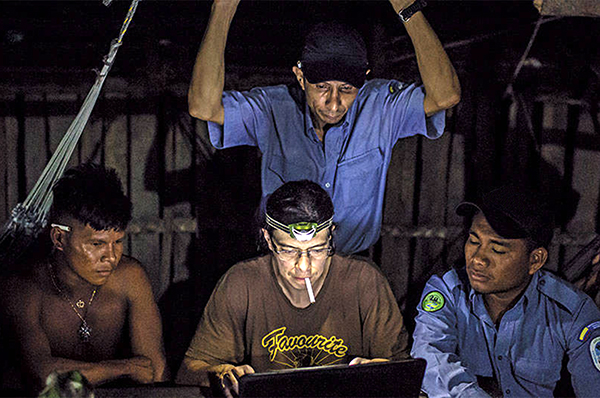
Scholars considered the Yuris, Passés and Jumanas to be lost at the end of the 19th century. They reappeared in January 1969, when two rubber tappers and merchants entered an indigenous maloca near the Puré River. Julián Gil and Alberto Miraña entered the site, but Alejandro Román returned to the farm to wait for them. They never returned.
“In a second expedition of soldiers, Indians, rubber tappers and hunters, the maloca was found. One of the patrols killed five defenseless indigenous people. Six more were taken hostage, until a French journalist returned them to the rainforest. They were called Caraballos because of the physical similarity of one of them with the boxer Bernardo Caraballo. Nobody understood their language,” said Franco in his book.
They were described as carnivores with thick bodies, long legs and arms that reached to their knees.
In the eighties and nineties, the isolated peoples of the Puré River area were at the mercy of drug trafficking and guerrilla warfare. But they knew how to remain on the margins. They were betrayed only by their liking for engine screws.
Locals in the area of La Pedrera, in the Amazon, told Franco that the isolated peoples took apart two motors and a generator from the guerrillas in 2001, by hand, in order to remove the screws and nuts to make necklaces.
It is already an established fact
In 2010, the Colombian National Parks System and ACT joined forces to establish certainty regarding the existence of the Yuris and the Passés and to justify a public policy for their protection. To that point, there had not been a single photograph of them. When flying over Puré, a commission led by Franco photographed rectangular malocas with rounded ends and three indigenous Yuris and Passés. They could not contain their emotion.
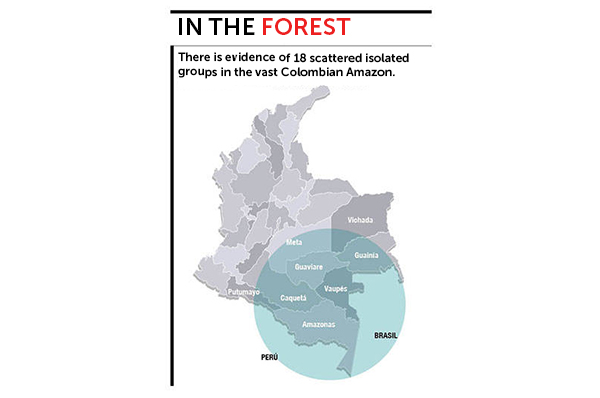
Since then, ACT has assembled the puzzle of the uncontacted, from 18 pieces of evidence in the Amazon. The organization reviewed the writings of travelers, rubber tappers, settlers and missionaries, made overflights in order to identify their homes, interviewed people who had seen or sensed them, and georeferenced primary ecosystems, such as headwaters.
Agreements also were reached such that the neighboring indigenous reserves will not hunt, fish or extract wood in places close to those occupied by the isolated peoples.
Thanks to ACT’s work, it is known that they use rectangular malocas, and that they cultivate cassava, chontaduro, plantain and coca in their vicinity. They do not chop down trees.
Their fixation with metal instruments impels them to make expeditions outside their state of isolation in order to look for pots, machetes and knives. They enter the malocas of known indigenous groups, but they never take clothes, mosquito nets or hammocks, only what they consider to be tools.
They can assemble elaborate wooden structures and leave them abandoned. But they are never going to throw away a knife, a machete or a part of an airplane because these are considered great trophies that help them to better survive. “In the rainforest, there are abandoned things, like gasoline canisters left by the narcotraffickers. They know that there is more outside; what they do not know is the extent. They associate the white man with drug traffickers, guerrillas, missionaries, miners and loggers who have harmed them,” emphasizes Aristizábal.
Protecting their isolation
The greatest threat to the isolated peoples is deforestation, which in 2017 ended with more than 144,000 lost hectares of Amazonian forest.
The contact of an isolated person with a non-indigenous person can revive the nefarious deaths that began in the time of the conquest. The simple sneeze of a settler can put the isolated person on a path to death because his body has no familiarity with certain diseases. Beyond the chainsaw, these groups are threatened by mining, livestock raising, roads and hydroelectric power plants, and the constant stalking of missionaries, anthropologists and even tourists, which can lead to their disappearance. On the other hand, leaving them without a forest means leaving them without a means of living.
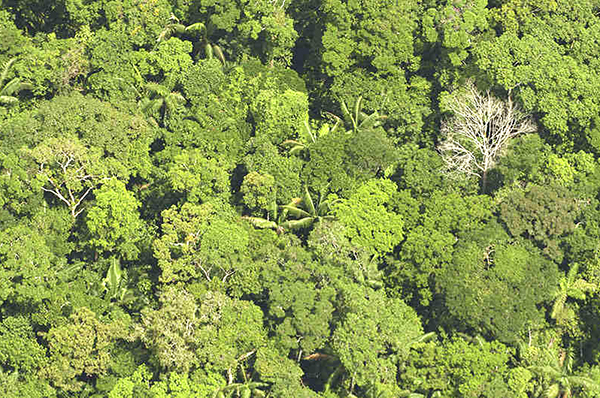
Franco dreamed that a public policy would protect the isolated peoples to prevent their extermination. His dream materialized four years after his death with Decree 1232 of 2018, which establishes prevention and protection measures, and creates a national system to ensure their rights, led by the Ministry of the Interior. The National Parks System pressured the government for the creation of this decree, together with Franco and ACT. But it has been working on the issue of uncontacted peoples since 2002, when it created the Puré National Park in order to safeguard their territories.
“In Puré, we created a management plan, which required the setting aside of intangible zones where no one can carry out activities that affect these people,” said Diana Castellanos, Amazonian territorial director of the National Parks System.
With the discovery of more evidence in the Amazon, the National Parks System issued an internal resolution with guidelines on how to act in the event of coming into contact with an isolated person. “It includes simple things such as not giving them clothing or food, and avoiding direct contact in order to prevent contagion through diseases and viruses with which their bodies have no familiarity.”
In Chiribiquete
In Chiribiquete, there are significant indications of the presence of isolated peoples in the southern area, discovered during the process of its first expansion. With the neighboring peoples of the area, from the indigenous reserve of Mirití, the National Parks System worked to avoid affecting their life, one led without contact with the rest of the civilization. “The indigenous people of the reserve have always known about the isolated peoples and have internal rules so as not to interfere with them. Today, we are updating the management plan to include areas of the northern section, which borders settler populations. Evangelicals are a constant threat,” says Castellanos.
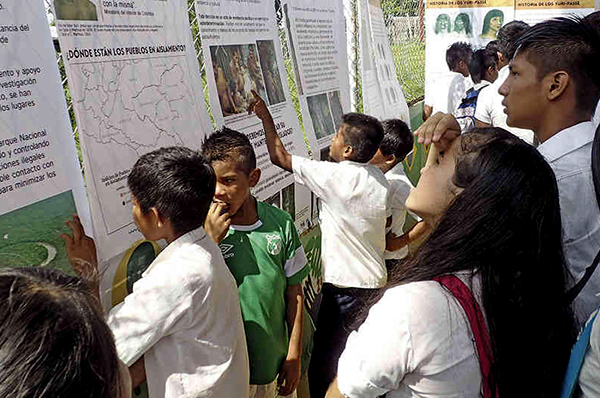
The decree has not been fully implemented. “There is talk about the formation of a committee, which has not yet been established. If an indigenous person decides to leave isolation, there is no procedure or protocol that establishes the steps to follow, or whom to call.” The National Parks System does not want to repeat the history of the Nukak.
Media Relations
For press release inquiries, please contact us at info@amazonteam.org.
Related Articles
Share this post
Bring awareness to our projects and mission by sharing this post with your friends.


